Take a look at the following numbers from InsideFacebook.com (February 2009):
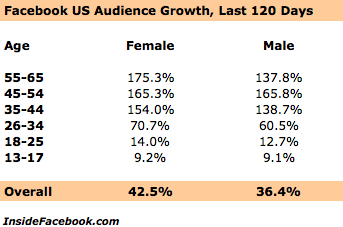
This shows that the fastest growing demographic on Facebook for the last 120 days is women over 55. However, notice that during the last 120 days, there has been triple digit growth on all females group over 34 years old. As of 02/01/2009, the over 34 age group (both male and female) of Facebook stands at 22% of all Facebook population.
 Smart marketers should take notice of this. Forget Big Brother. Enter the Digital Mom. There are several buzz words trying to catch the spirit of online mothers but the one that makes a lot of sense is digital mom used by Razorfish in its report, named “Digital Mom”:
Smart marketers should take notice of this. Forget Big Brother. Enter the Digital Mom. There are several buzz words trying to catch the spirit of online mothers but the one that makes a lot of sense is digital mom used by Razorfish in its report, named “Digital Mom”:
She is way beyond programming the VCR, checking answering machine messages, and emailing. Now, she’s likely to be managing the household DVR library or downloading videos/podcasts to teach and entertain; relaxing with casual or multiplayer games; using her mobile phone to text her family or browse the Web; and meeting and connecting with a wider
range of “friends” than ever before through online social networks. And digital moms are not a niche; they have, in fact, become the mainstream, representing an estimated 84% of
moms online in the U.S. today.
However, online marketers need to be pretty careful (and have a lot of common sense!) when communicating with digital moms. One of the most common complaints of digital moms is that online marketers believe that they are all alike.
The Razorfish report, Digital Mom, provides five useful core segments of socially connected moms and their implications for online marketers and social media specialists. Please notice that these 5 core segments are not to be taken as final definitions but rather as guidelines on how to develop a better understanding of digital moms.
1. The Self Expressor:
The Self Expressor is a mom who enjoys organizing and beautifying her personal profile page to reflect her ownunique style and to offer online friends an inviting place to visit. Her personal profile is often adorned with plentiful photos, her individually selected audio playlist, a custom skin reflecting her preferred design palette, and several social and expressive widgets to entertain her visiting online friends. Polls are one of her favorite ways to engage others on topics of interest and gather the opinions of many fairly quickly. She is also generous in responding to polls,and prefers the structured, efficient interaction these areas provide to completely free form conversation and blogging.
Implications for marketers: To connect with the Self Expressor, marketers should focus on providing tools and functionality that help her design, organize, and present her online social world. As she incorporates the use of these tools on her personal homepage, brands also benefit from the integration on her personal social network real estate and the viral benefit of having her spread brand messages to her online friends. Marketers may also tap her creativity and get her directly involved in a campaign—particularly if they appeal to her more visually artistic design-related nature.
2. The Utility Mom:
The Utility Mom is inclined to join online groups—particularly her local school groups or other groups providing practical information, yet she is not a frequent contributor to the conversation. She enjoys the widgets on her profile page, especially games and quizzes she can play on a regular basis whenever convenient. As another informative and fun online diversion, she will answer other moms’ poll questions, but she will not venture to create and post any poll questions of her own. She is also reluctant to upload and share photos and has the lowest numberof online photos of any of the mom segments.
Implications for marketers: To connect with the Utility Mom, marketers should associate their brands with social network features she seeks out, especially game or quiz related widgets or poll activities. While the Utility Mom has relatively few online friends, she also values product related information from other moms like her. In fact, she values the purchase related information provided by moms like her much more than that provided by her online friends. Marketers should also tap mom influencers within the social network who share other commonalities to her Utility Mom profile (similar age kids, and personal interests), but who are more comfortable creating andsharing brand messages that will resonate with Utility Mom.
3. The Groupster:
She is a very active member of the online mom community. She joins more groups than any other segment, and she ismost likely to start a new group. She generously contributes to online forums, blogs often, and asks and answers questions. She is not inclined to share photos or respond to poll questions.
Implications for marketers: Marketers can best reach the Groupster by associating with features she is already engaging with on social networks—particularly group, blogging, and message center related areas. She is more receptive recipient to brand messages and product information when in her social network, especially if these communications are coming from other moms like herself. The Groupster can also be an articulate brand advocate, and she is very capable of sharing her direct, authentic product experiences with other moms in her friend network and her shared interest groups
4. The InfoSeeker:
Overall, she is not a very engaged participant in the social network. She enjoys reading blogs and viewing others’ photos, especially those related to being a new mom. This digitally savvy younger mom is also quite comfortable uploading photos and sharing images of her new baby online. Most of her interaction with the community is centeredaround asking and answering purposeful questions. Rarely does she write blogs or post comments in groups, chat with others, or even take the time to answer polls.
Implications for marketers: Marketers looking to connect with the Infoseeker should align with the online features she is most engaging with like Q&A related content, product reviews, and even photo sharing areas. Brands that can tie in to the information she is seeking particularly on parenting issues and purchases associated with this lifestage – and do so through the highly credible voice of other moms (e.g. mom product review from another new mom like her), will be optimally received.
5. The Hyperconnector:
She is an active social network member, connecting frequently with others through both the blogs she writes and the private messages she sends. More free flowing conversational areas are her favorite—responding to open ended journal questions, commenting on others’ posts rather than responding to multiple choice polls or specific member questions. The more visual aspects of expressing herself online are not as important to her; she under indexes dramatically on sharing photos and customizing her profile page.
Implications for marketers: Marketers looking to connect with the Hyperconnector should target conversational areas of social networks where she spends much of her time. As a social network member who is comfortable both expressing herself verbally and connecting with others in social media, she is an excellent candidate to enlist directly in social influence marketing efforts. Involve her directly in your campaign to experience your product, and encourage her to generously share her articulate view


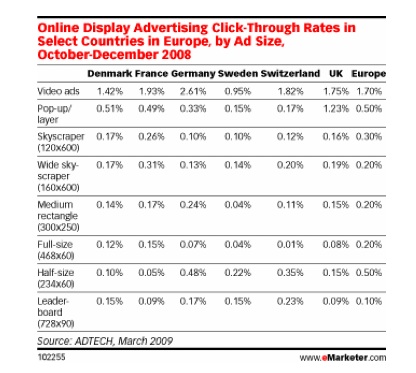

 Before you start your analytics, it is important to understand, at least at a high level, that there several important steps to the process of executing e-mail campaigns:
Before you start your analytics, it is important to understand, at least at a high level, that there several important steps to the process of executing e-mail campaigns:
 With these metrics you will determine:
With these metrics you will determine:


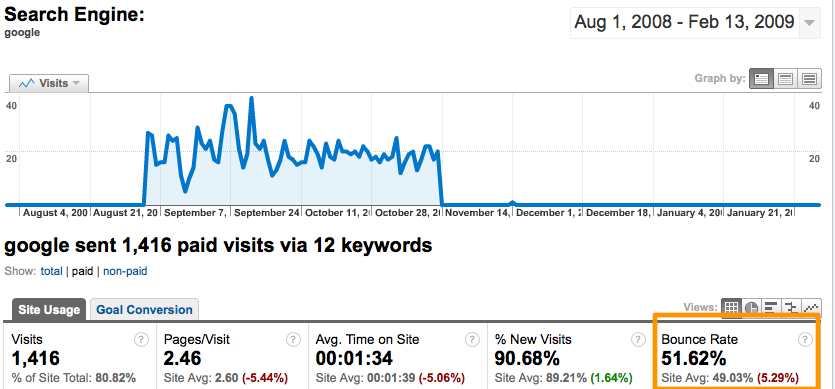
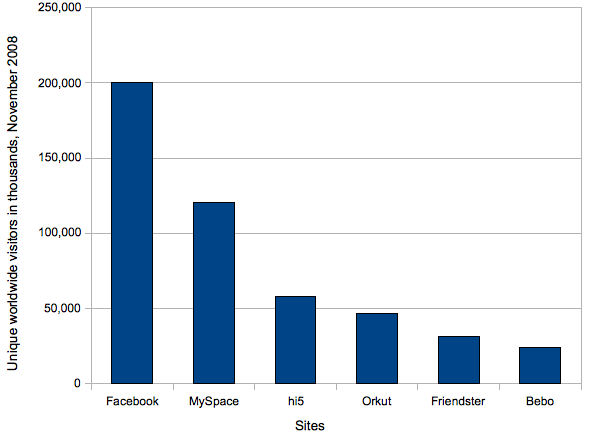
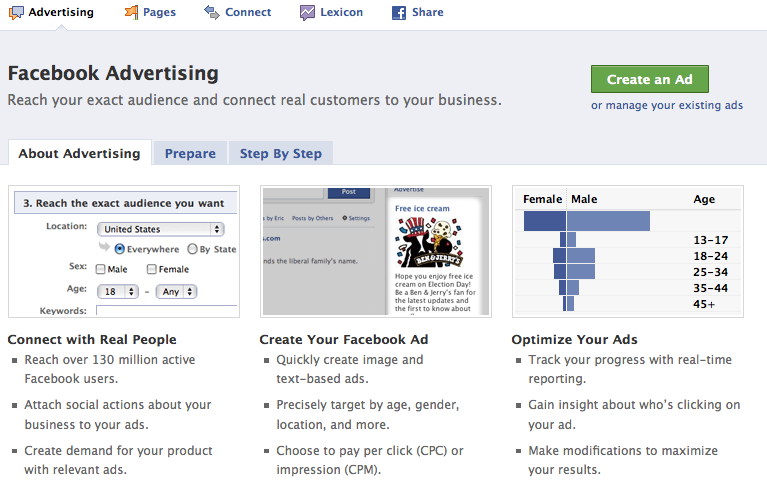

 It is important that you have a variety of images available because you will be needing as you A/B test your ads. Notice that
It is important that you have a variety of images available because you will be needing as you A/B test your ads. Notice that 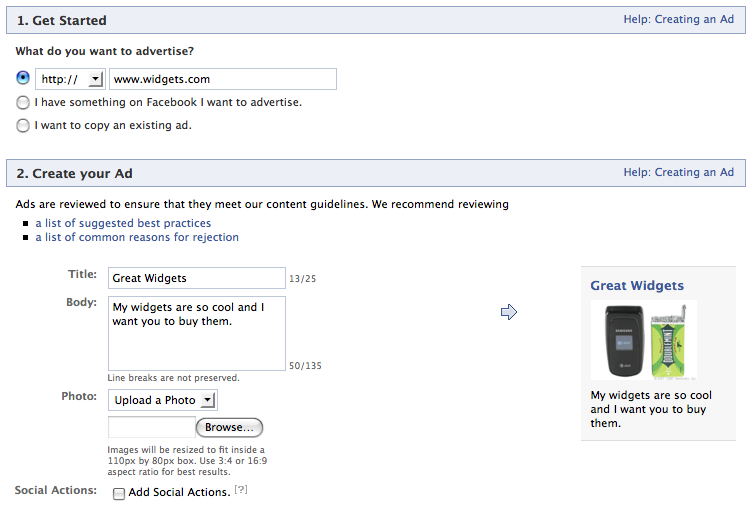
 Wow, this is a lot of useful information! Notice that we get a couple of relevant news that show what drove queries for this term. Company names and product names are useful because then you can go into their websites and see what are their current SEO and SEM practices. Also, you should look if the already have ads around Facebook. Don’t try to reinvent the wheel and keep an eye on the current practices of your competitors. It is also important to check out what keywords are related to your keyword, what regions (or countries or cities) provide the most queries for your keyword, and what languages are those queries made on. Another important source of information is Google Ad Planner. For a discussion on how to use Google Ad Planner, refer to this
Wow, this is a lot of useful information! Notice that we get a couple of relevant news that show what drove queries for this term. Company names and product names are useful because then you can go into their websites and see what are their current SEO and SEM practices. Also, you should look if the already have ads around Facebook. Don’t try to reinvent the wheel and keep an eye on the current practices of your competitors. It is also important to check out what keywords are related to your keyword, what regions (or countries or cities) provide the most queries for your keyword, and what languages are those queries made on. Another important source of information is Google Ad Planner. For a discussion on how to use Google Ad Planner, refer to this 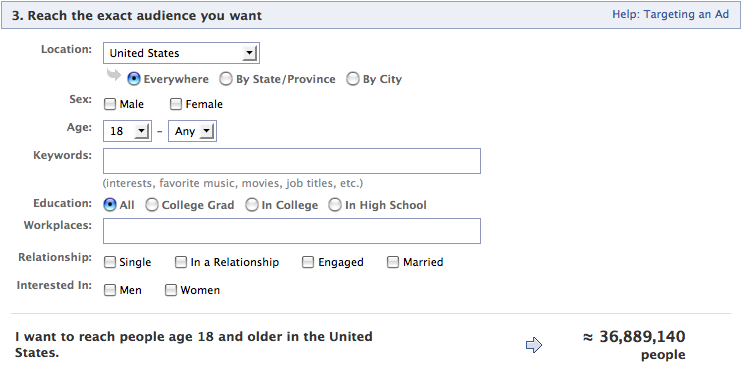 Using the information from the previous steps, you can fill in the fields on step 3. Notice that not all keywords are available at Facebook, so its important that you look for keywords related to your own keyword(s) of choice.
Using the information from the previous steps, you can fill in the fields on step 3. Notice that not all keywords are available at Facebook, so its important that you look for keywords related to your own keyword(s) of choice.









